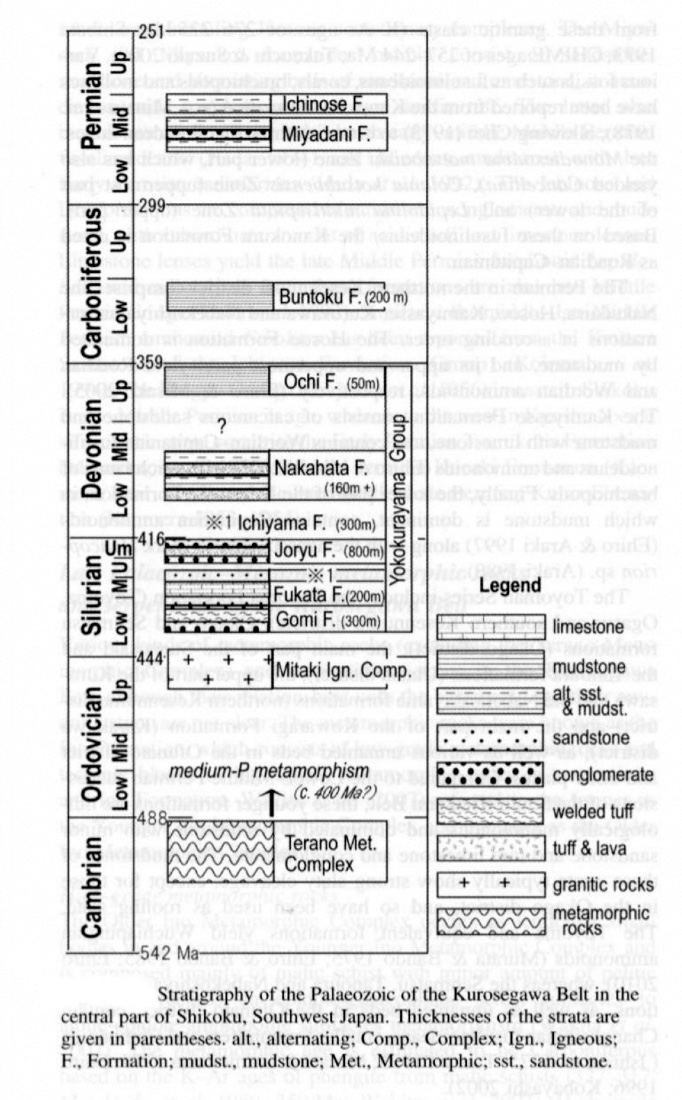Terano Metamorphic Complex Fm
Period:
Cambrian
Age Interval:
Upper Cambrian (Paibian), (15a)
Province:
Kurosegawa Belt- Shikoku
Type Locality and Naming
Kurosegawa Belt-central Shikoku
Synonym:
Lithology and Thickness
The Terano Metamorphic Complex comprises medium-pressure type (Karakida l981) biotite gneiss and amphibolites.
[Figure 1: Stratigraphy of the Paleozoic of the Kurosegawa Belt in the central part of Shikoku, Southwest Japan (after M. Ehiro et al., 2016)]
Lithology Pattern:
Basement
Relationships and Distribution
Lower contact
Regionally, the schematic strat column indicates this the oldest unit.
Upper contact
It is in fault contact with the Mitaki Igneous Complex Fm
Regional extent
Kurosegawa Belt-central Shikoku. The garnet-clinopyroxene granulite and amphibolite of the Kurosegawa Belt in Kyushu District have Sm-Nd ages of c.420, and 490 and 540 Ma, respectively (Osanai et al., 2000).
GeoJSON
null
Fossils
Age
U-Pb ages of detrital zircons from the Terano Metamorphic Complex show peaks at 450-500 and c. 600 Ma (Yoshimoto et al., 2013). Shown as Upper Cambrian, hence placed Base of Paibian
Age Span:
Beginning stage:
Paibian
Fraction up in beginning stage:
0.0
Beginning date (Ma):
497.00
Ending stage:
Jiangshanian
Fraction up in the ending stage:
1.0
Ending date (Ma):
491.00
Depositional setting
Depositional pattern:
Additional Information
Compiler:
Moreno, T., WALLIS, S., Kojima, T. & Gibbons, W. (Eds) 2016. The Geology of Japan. Geological Society. London. 1-24.
